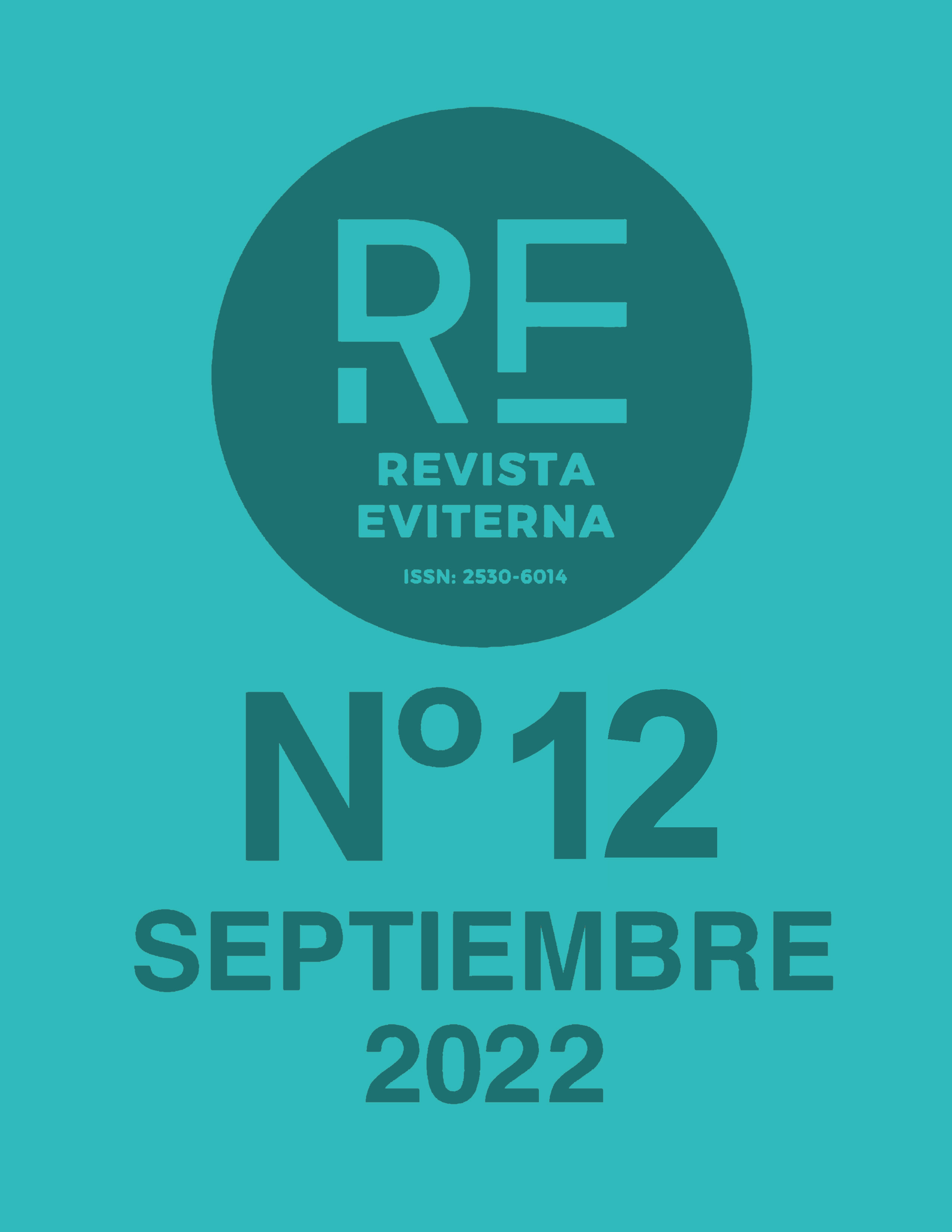Marian objects
Situated learning experiences in the creation of a digital collection
DOI:
https://doi.org/10.24310/Eviternare.vi12.14642Keywords:
Data processing, Learning methods, Pedagogical research, Religious art, Religious practiceAbstract
This article reflects on the possibilities of incorporating situated learning strategies and digital humanities in the educational practice of the Art History program, at the National School of Higher Studies, Morelia Unit, of the National Autonomous University of Mexico (UNAM). In particular, a didactic design is presented to promote the development of documentary management skills, image analysis and critical argumentation focused on the study of colonial religious Art; based on the use of the Omeka S platform, within the methodological framework of a multi-serial study of didactic design. We will focus on the collective experience of building a digital collection of Marian objects in interaction with other social agents, as artists and promoters, as well as on the principles of didactic design that support them. Based on this learning situation, the possibilities offered by the construction of digital collections as an alternative for the study of material culture in Ibero-America are discussed. In addition, keys are offered for a reconciliation of the significance of relationships between the objects in a digital collection and the agency of the image. Finally, an evaluation of the scope of these pedagogical proposals will be presented, which will allow us to propose a route for their future development.Downloads
Metrics
Publication Facts
Reviewer profiles N/A
Author statements
Indexed in
-
—
- Academic society
- N/A
- Publisher
- Universidad de Málaga
References
Baschet, J. (2008). L'iconographie médiévale. Gallimard.
Cuadriello, Jaime, “El Obrador Trinitario o María de Guadalupe creada en idea, imagen y materia”, en El Divino Pintor: la creación de María de Guadalupe en el taller celestial, México, Museo de la Basílica de Guadalupe, 2001.
Díaz Barriga, F. (2003). Cognición situada y estrategias para el aprendizaje significativo. Revista electrónica de investigación educativa, 5(2), 1-13. Recuperado de: https://redie.uabc.mx/redie/article/view/85/151
Gell, A. (2018). Arte y agencia: una teoría antropológica (Vol. 18). Sb editorial.
González Mello, R. (2021). Información, datos y metadatos para la conservación del patrimonio cultural. Intervención (México DF), 9(17), 6-21. Recuperado de: https://www.redalyc.org/journal/3556/355657563002/html/
Hendricks, C. C. (2001). Teaching causal reasoning through cognitive apprenticeship: What are results from situated learning? The Journal of Educational Research, 94(5), 302-311. Recuperado de: https://www.tandfonline.com/doi/abs/10.1080/00220670109598766
Hirose, M., Narro, J., Trigo, F., de la Fuente, J., Oyama, K., Pe?rez, E. (2015). La Escuela Nacional de Estudios Superiores. Un proyecto educativo para el siglo XXI. Me?xico: UNAM.
Hutchinson, T. (2020). Natural language processing and machine learning as practical toolsets for archival processing. Records Management Journal. Recuperado de: https://harvest.usask.ca/handle/10388/12952
Iliadis, A., & Russo, F. (2016). Critical data studies: An introduction. Big Data & Society. Recuperado de: https://journals.sagepub.com/doi/10.1177/2053951716674238
Lave, J., & Wenger, E. (1991). Situated learning: Legitimate peripheral participation. Cambridge university press.
Montes, F. (2016). Sevilla guadalupana. Arte, historia y devoción. Sevilla: Diputación de Sevilla.
Morgan, D. (2005). The Sacred Gaze. University of California Press.
Plomp, T. (2013). Educational design research: An introduction. Educational design research, 11-50.
Portús, P. J., & Museo del Prado,. (2016). Metapintura: Un viaje a la idea del arte en España.
Sagástegui, D. (2004). Una apuesta por la cultura: el aprendizaje situado. Sinéctica, Revista Electrónica de Educación, (24), 30-39. Recuperado de: https://www.redalyc.org/pdf/998/99815918005.pdf
Schenone, H. H. (2008). Santa María. Ciudad Autónoma de Buenos Aires, Argentina: Educa.
Vences, M. (2013). La Virgen de la Antigua en Iberoamérica, México: UNAM-CIALC, El Colegio de Michoacán.
Downloads
Published
How to Cite
Issue
Section
License
All the contents published in Revista Eviterna are subject to the Creative Commons Reconocimento-NoComercia-Compartirigual 4.0 license, the full text of which can be found at <http://creativecommons.org/licenses/by-nc-sa/4.0>
They may be copied, used, disseminated, transmitted and publicly exposed, provided that:
The authorship and original source of your publication (Journal, editorial and URL of the work) are cited.
They are not used for commercial purposes.
The existence and specifications of this use license are mentioned.

Copyright is of two kinds: moral rights and patrimonial rights. Moral rights are perpetual, inalienable, inalienable, inalienable, inalienable and imprescriptible prerogatives.
In accordance with copyright legislation, Revista Eviterna recognizes and respects the moral rights of the authors, as well as the ownership of the economic right, which will be transferred to the University of Malaga for dissemination in open access.
The economic rights refer to the benefits obtained by the use or disclosure of the works. Revista Eviterna is published in open access and is exclusively authorized to carry out or authorize by any means the use, distribution, disclosure, reproduction, adaptation, translation or transformation of the work.
It is the responsibility of the authors to obtain the necessary permissions of the images that are subject to copyright.







12.png)



